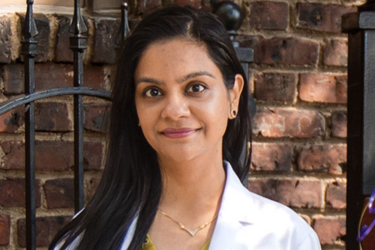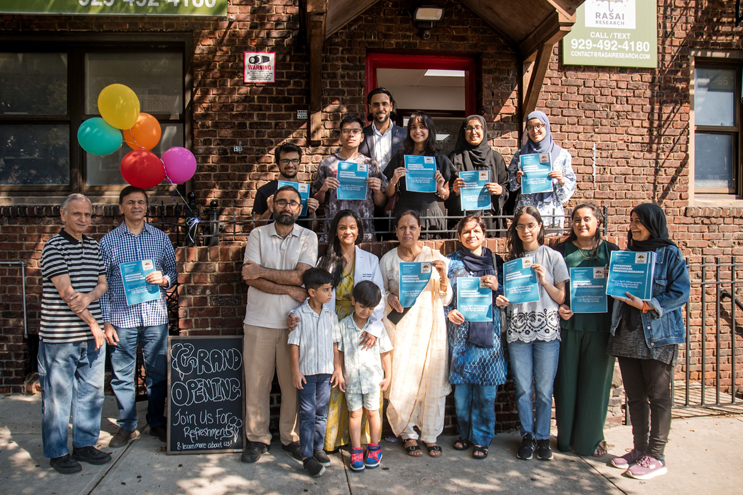A New Site With An Old Truth: Access Is Everything

By Dan Schell, Chief Editor, Clinical Leader

When I spoke with Ammara Mushtaq, MD, I didn’t just hear the origin story of a new research site. I heard a blueprint for how community-rooted clinical research can work when the people building it actually live with their doors open to the neighborhood. Two months ago, Mushtaq and her husband launched RASAI Research in Jackson Heights, NY — RASAI is pronounced “rah-sigh,” an Urdu word meaning “access” and “reach,” which doubles as the mission statement to the site.
Mushtaq’s background gives her unusual range. She is an infectious diseases physician who has served as a principal investigator and medical director, including time at Brooklyn Clinical Research, and she continues to hold faculty responsibilities at Montefiore. That combination of clinic, site, and PI experience shows up in how she has designed RASAI to function on Day 1, as a dedicated research site, not a clinic that dabbles in trials. Her public profile reflects the same arc: physician, PI, and now founder of a community-anchored site in Queens.
Why Jackson Heights, And Why “Access”
RASAI’s choice of Jackson Heights was personal and practical. Her husband grew up in Queens; her in-laws are there; and she loves the neighborhood’s food and energy. That familiarity matters when you are asking people to trust research. “Community trust is hard, and it’s earned,” she told me. Even while RASAI’s space was being built out, passersby stopped to ask what the “new doctor’s office” would be. Those sidewalk conversations turned into explainers on clinical trials and a steady introduction to the site’s real purpose.
From the start, Mushtaq made “Powered by Our Neighborhood” more than a web page slogan. RASAI buys locally, even when it’s slower or a little pricier. The furniture shop next door assembled equipment. Participant transportation runs through a small Astoria firm instead of a national app, chosen only after RASAI reviewed privacy and tracking policies. For IRB oversight, she works with BRANY — the Biomedical Research Alliance of New York — for pre-screening and investigator-initiated work, while continuing to use the familiar national boards when a sponsor requires it. It’s an intentionally local footprint that keeps dollars, vendors, and goodwill in the community she’s asking to volunteer for research.
That community emphasis extends to outreach. RASAI has hosted an open house with lunch and a “What Are Clinical Trials?” talk. The team is now booking a slate of education sessions at a nearby senior center — four October talks branded as Heart Health Month — because most of the site’s active studies today involve older adults and cardiology. The plan is to deliver value first and only mention open trials at the end of the series. That sequencing is a small thing, but it signals something bigger: relationship before recruitment.

A New Site’s Operating Reality
ASAI opened with three active trials and then hit pause to avoid the common “more studies than staff” trap. Mushtaq hired two coordinators and an administrative assistant quickly, mostly through her own network — a reminder that in New York City, qualified people often find you if you are visible and credible. She’s therapeutic-area agnostic in principle but realistic in practice: the current sweet spots are infectious diseases, HIV vaccines, and cardiology, simply because that is where she has prior PI experience. When a protocol sits outside her wheelhouse, she says no and tries to point it toward a physician who actually sees the target patients. That suggests a more sustainable growth route for new sites: build depth where you are already clinically strong, then bring community physicians in as sub-investigators or future PIs when the protocol fits.
On recruitment, RASAI does what every successful site does — run social media ads that predictably fill the top of the funnel. But Mushtaq is careful not to let paid media become the only source of participants. She employs “community liaisons” who attend cultural festivals across Jackson Heights’ Bengali, Nepali, Indian, and Pakistani communities, speak the language, hand out flyers, and explain oversight safeguards the public rarely hears about — PI monitoring, sponsor and CRO review, and IRB reporting for significant events. The impact is slower than ads, but it seeds trust in places where research has historically shown up only when it needs something. The morning after one Nepali festival, the site received two inbound calls from people who had spoken with RASAI’s liaison the night before. That is how community recruiting actually works — in small, compounding wins.
We Need More PIs — And We Need To Keep Them
If there is a thesis to Mushtaq’s approach, it’s that our industry continues to confuse recruiting PIs with retaining them. She has a blunt assessment of why physicians hesitate: unfamiliarity with research operations, fear of compliance landmines, and the perception that trials will only bury them in paperwork. Her counter is equally blunt. First, design the site so physicians can practice medicine while trained research staff handle logistics. Second, mentor new investigators and give them real authorship and protocol input so they feel like collaborators, not contractors. Third, don’t drag a doctor into a protocol that doesn’t match their patients or bandwidth.
It’s hard to argue with the stakes. We are still living with the “one-and-done PI” problem — investigators who participate once and never return — a topic I explored in “The One-And-Done PI: Measuring The Current Site Landscape” Clinical Leader Live. And for a ground-level view of that same phenomenon, see The One-And-Done Investigator: A Clinical Trial Story. Both underline Mushtaq’s point: Unless we change how we support, recognize, and engage physicians, we will keep recruiting ourselves into the same attrition.
There’s also a practical, near-term opportunity hiding in plain sight. Mushtaq sees capable community physicians — not just academics — who are perfectly positioned to execute tough protocols because the patients are already in their waiting rooms. They don’t get involved because no one has shown them a compliant, realistic operating model. That’s solvable. Pair a community doctor with an experienced site like RASAI, provide regulatory scaffolding, and let them experience a first study without drowning. That’s how you turn a potential one-and-done PI into a second-and-third-and-tenth.
What RASAI Tells Us About The Path Forward
Listening to Mushtaq, you realize the real innovation isn’t a widget or workflow, it’s proximity. Proximity to patients by choosing a dense, diverse neighborhood where you can walk outside at 10 p.m. and still be in the stream of daily life. Proximity to physicians by matching protocols to real practice patterns and bringing research to their clinics, not the other way around. Proximity to trust by buying from local vendors, showing up at festivals, and teaching first before you “ask.”
That model won’t eliminate every operational headache, and it won’t magically create more physicians with free time. But it can turn a resistant ecosystem into a receptive one. When neighbors watch a once-dark storefront fill with equipment and people, when seniors learn about atherosclerosis before hearing a single inclusion criterion, when a PI knows someone else will handle participant rides and IRB submissions, clinical research stops feeling like an imposition.
Mushtaq didn’t name her site RASAI by accident. Access and reach are the problems and the promise. If we want more investigators, we have to make research reachable — culturally, logistically, and professionally. And if we want them to stay, we have to make it worth their access to the patients and communities we say we want to serve.
